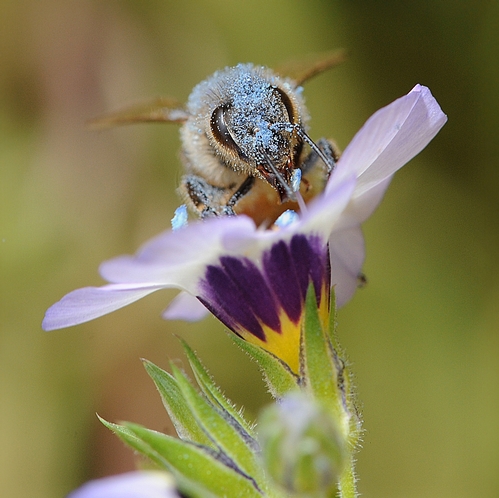Talk about pollen power.
When honey bees forage among the bird’s eyes, they're a delight to see. They dive into the yellow-throated lavender flowers and emerge covered with a blue-gray pollen.
Bird’s eyes (Gilia tricolor) is a native California wildflower common in the Central Valley and surrounding mountain ranges and foothills.
If you look behind the Sciences Laboratory Building (near Briggs Hall) on the University of California, Davis campus, you'll see a thriving wildflower patch filled with bird's eyes, tidy tips, rock purslane, salvia and desert bluebells.
You'll see honey bees, hover flies, lady bugs and carpenter bees.
It's a bird's eye view for the bees. Or maybe a bee's eye view.
Attached Images:

Honey Bee

Bottoms Up

Covered with Pollen